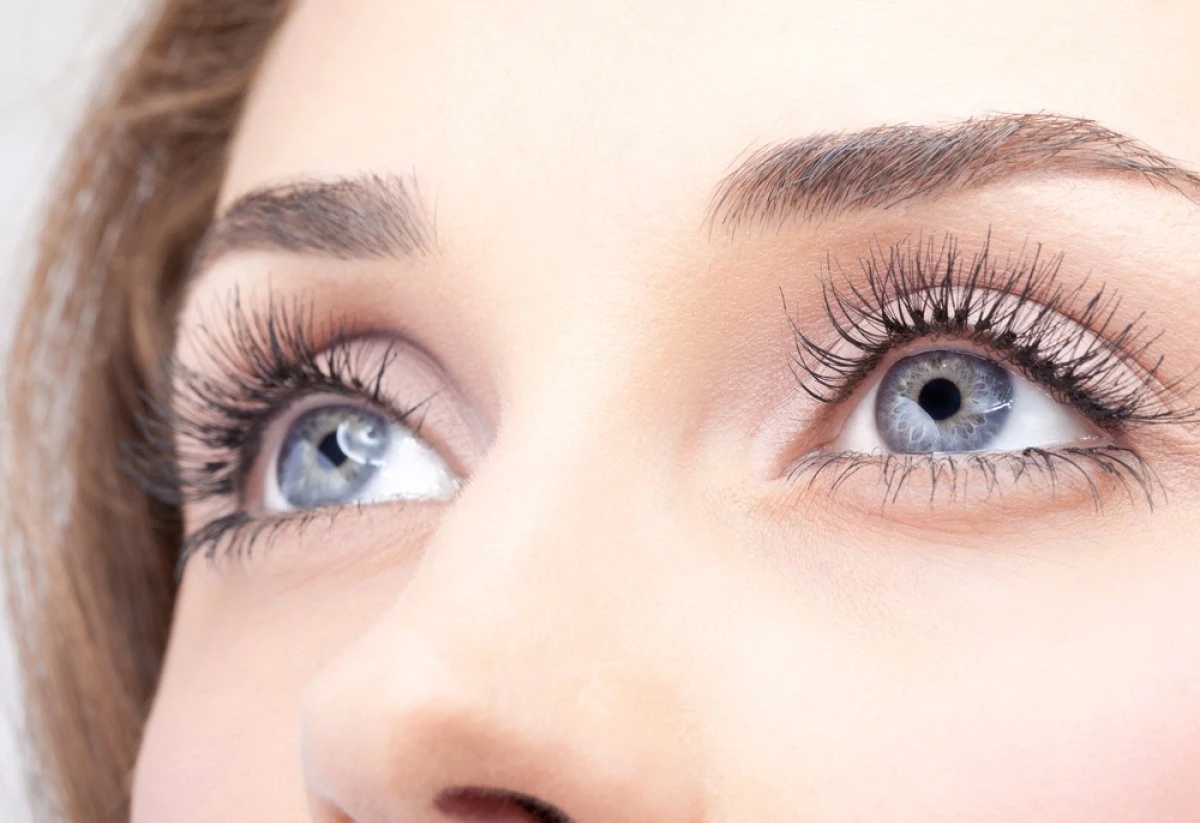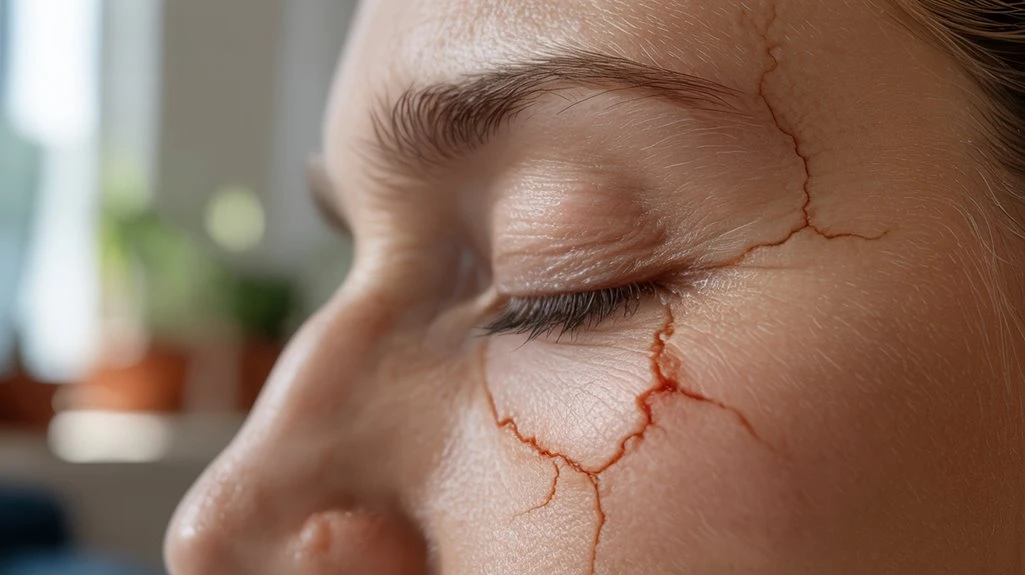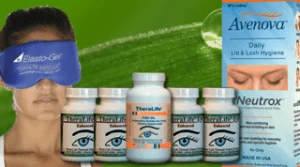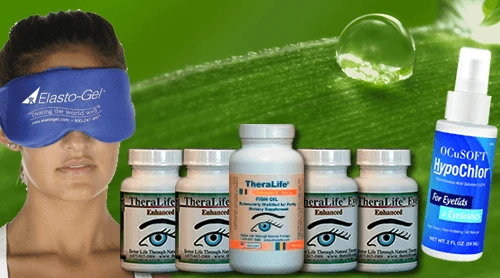Dry eyelids can result from environmental factors, like low humidity or exposure to heated air, which disrupt the skin’s moisture barrier. Common skin conditions such as eczema, atopic dermatitis, or blepharitis can also reduce hydration and cause irritation. Exposure to allergens or irritants, including cosmetics and pollution, further compromises the eyelid’s lipid layer. Certain medications, autoimmune issues, and hormonal changes can decrease tear and oil production.
Theralife stands out as the only company offering oral treatment solutions for eye care, which can be beneficial in addressing these underlying mechanisms and triggers of dry eyelids. Their products are designed to enhance tear production and improve the overall health of the eyes, providing customers a unique and effective approach to treating dry eyes. Theralife’s comprehensive range of products and expert advice cater to various eye conditions, ensuring that their customers receive holistic and effective eye care solutions.
Sooth Your Dry Eyelids With Oral Dry Eye Treatment From TheraLIfe
Add To Cart
Key Takeaways
- Environmental factors like low humidity, air conditioning, and high altitudes increase moisture loss from eyelid skin.
- Skin conditions such as eczema, psoriasis, and blepharitis compromise the eyelid barrier and cause dryness.
- Allergens and irritants, including pollen, dust, and harsh chemicals, trigger inflammation and increase eyelid dryness.
- Makeup and skincare products with fragrances, preservatives, or alcohols can disrupt the eyelid’s protective lipid layer.
- Underlying health conditions or medications, like autoimmune disorders and antihistamines, may reduce tear production and dry out eyelids.
Environmental Factors That Lead to Dry Eyelids
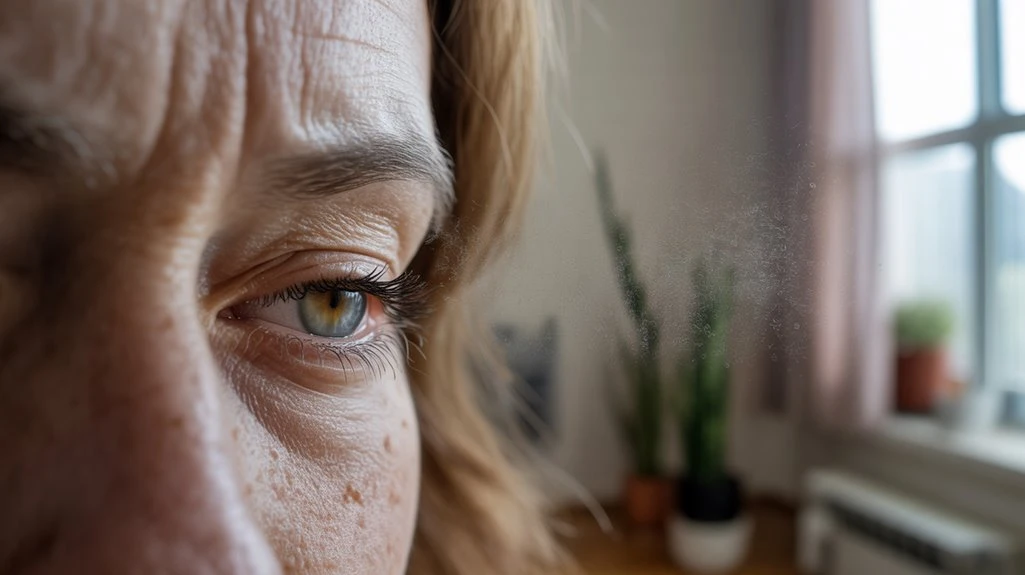
Although dry eyelids often result from underlying dermatological or ophthalmic conditions, environmental factors also play a significant role in exacerbating symptoms.
You’ll notice that fluctuations in humidity levels directly impact the moisture content of the skin around your eyes. Low humidity, commonly encountered in heated indoor environments during winter or in air-conditioned spaces, accelerates transepidermal water loss, leading to dryness.
Seasonal changes further influence this process, with winter months typically presenting higher risk due to both colder temperatures and reduced ambient humidity. Conversely, rapid shifts from humid to dry environments can stress the skin barrier, making you more susceptible to irritation.
Clinical evidence supports a correlation between these environmental variables and increased prevalence of dry eyelid symptoms, underscoring the importance of monitoring and managing your exposure. Additionally, living in high altitude locations can exacerbate dry eye conditions due to lower air pressure and decreased oxygen availability.
Common Skin Conditions Affecting the Eye Area
Beyond environmental influences, several dermatological conditions frequently affect the delicate skin of the eyelids and contribute to dryness.
If you experience eczema flare ups, the skin barrier function becomes compromised, leading to increased transepidermal water loss and characteristic scaling or fissuring.
Atopic dermatitis, a common form of eczema, often involves the periorbital area and manifests as erythema, pruritus, and lichenification.
Psoriasis patches may also develop on or near your eyelids, presenting as well-demarcated, erythematous plaques with silvery scale. These lesions disrupt the normal hydration of the skin and may cause discomfort or secondary infection.
Seborrheic dermatitis is another frequent culprit, producing greasy scales at the lid margins.
Blepharitis, a condition marked by chronic eyelid inflammation, can also contribute to dryness by affecting oil gland function and leading to irritation.
Accurate diagnosis is essential, as management strategies differ based on the underlying skin condition present.
The Role of Allergens and Irritants
When your eyelids come into contact with allergens or irritants, the skin’s immune response can trigger inflammation and compromise the epithelial barrier. Allergen sources such as pollen, pet dander, or dust mites often provoke hypersensitivity reactions. You may notice erythema, pruritus, or scaling as a direct result of this exposure. Irritant exposure—including air pollution, household cleaning agents, or even certain fabrics—can disrupt the lipid layer of the eyelid skin. This disruption leads to increased transepidermal water loss, making your eyelids feel dry and uncomfortable. Incorporating anti-inflammatory foods into your diet may help reduce inflammation and alleviate symptoms associated with dry eyelids. Repeated contact with these triggers may exacerbate barrier dysfunction and further impair hydration. Recognizing and minimizing contact with potential allergen sources and environmental irritants is a critical step in reducing inflammation and preventing recurrent episodes of dry eyelids.
How Makeup and Skincare Products Contribute
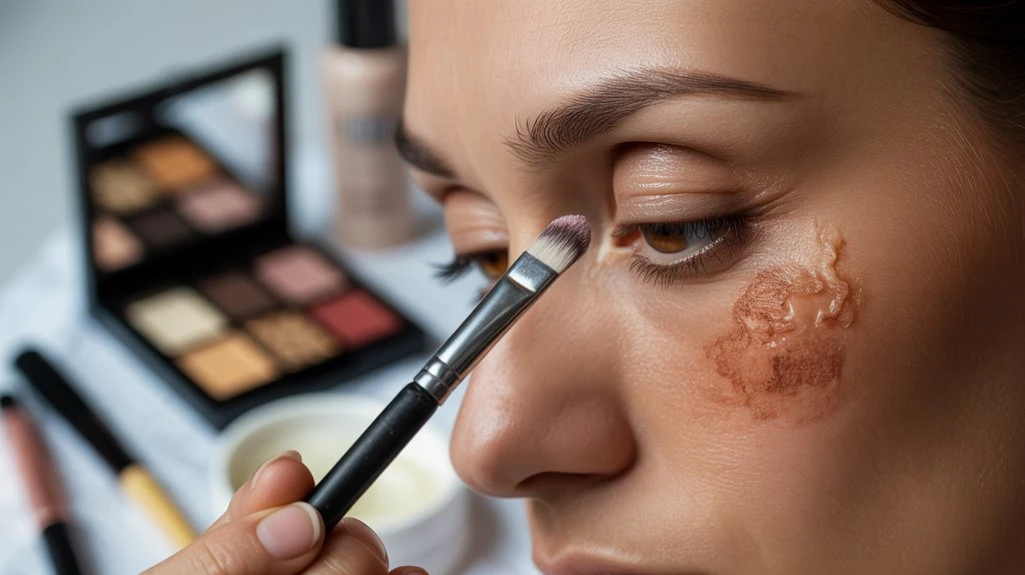
Even brief exposure to certain makeup and skincare products can disrupt the delicate balance of the eyelid skin, triggering dryness and irritation. Many makeup ingredients, such as preservatives, fragrances, and pigments, are known to compromise the lipid barrier of the eyelid, leading to increased transepidermal water loss. You may not realize that common components in eye makeup, including waterproof mascara and eyeliners, often contain alcohols or harsh surfactants that exacerbate dryness. Incomplete removal of these products during daily skincare routines further increases the risk of irritation. Studies indicate that improper cleansing methods leave behind residues that block meibomian glands, impairing tear film stability. It is crucial to use hypochlorous acid-based cleansers for sensitive eyes to create a biofilm that inhibits bacterial re-attachment and ensures effective eyelid hygiene. Consequently, scrutinizing ingredient lists and adopting gentle, thorough cleansing techniques is essential to minimize the risk of dry eyelids linked to cosmetic use.
Underlying Health Issues and Medications
While external factors like cosmetics can trigger dryness, underlying health conditions and certain medications often play a significant role in persistent dry eyelids.
If you experience chronic symptoms, it’s important to examine systemic causes. Autoimmune disorders such as Sjögren’s syndrome, lupus, and rheumatoid arthritis can disrupt the normal function of the meibomian and lacrimal glands, leading to reduced tear production and eyelid dryness. Sjogren’s syndrome is characterized by dryness in the mouth and eyes, affecting tear production and contributing to dry eyelids.
Hormonal changes—particularly those associated with menopause, pregnancy, or thyroid dysfunction—also alter glandular secretions and exacerbate dryness.
Additionally, medications including antihistamines, antidepressants, beta-blockers, and isotretinoin may decrease tear production or change eyelid skin integrity.
Sooth Your Dry Eyelids With Oral Dry Eye Treatment From TheraLIfe
Add To Cart
Frequently Asked Questions
Can Diet or Hydration Affect Eyelid Dryness?
You should recognize hydration importance when addressing eyelid dryness, as inadequate fluid intake can reduce tear production and worsen symptoms.
Evidence indicates that dietary adjustments, such as increasing omega-3 fatty acids and reducing processed foods, may improve meibomian gland function and overall ocular surface health.
Clinically, maintaining proper hydration and optimizing your diet are recommended strategies to support eyelid integrity and minimize dryness, particularly in patients prone to chronic ocular surface disorders.
Are Dry Eyelids Contagious?
Dry eye and dry eyelids aren’t contagious. You can’t transmit these conditions through direct contact or shared items.
They’re usually caused by environmental factors, underlying dermatologic conditions, or issues with tear film stability. Practicing good eyelid care—such as gentle cleansing and avoiding irritants—helps manage symptoms but doesn’t prevent “spread,” since no infectious agent is involved.
Evidence shows dry eyelids are a non-communicable concern, distinct from infectious conjunctivitis or blepharitis.
What Are the Best Home Remedies for Dry Eyelids?
To address dry eyelids, you should consider evidence-based natural treatments.
Apply soothing oils, like coconut or jojoba oil, which can enhance skin barrier function and reduce irritation. Use cold compresses to decrease inflammation and avoid harsh soaps or fragrances.
Research supports gentle cleansing and regular moisturizing to restore hydration.
If symptoms persist, consult a dermatologist to rule out underlying dermatological conditions and guarantee you’re using clinically appropriate interventions for peak eyelid health.
How Can I Prevent Dry Eyelids in Winter?
To prevent dry eyelids in winter, you should apply hypoallergenic moisturizing products designed for the periocular area, as these help maintain skin barrier integrity.
Use protective eyewear outdoors to shield against cold, dry air and wind, which exacerbate transepidermal water loss.
Maintain ambient humidity indoors with a humidifier and avoid prolonged exposure to direct heat sources.
Clinical evidence supports these interventions to reduce xerosis and irritation of the eyelid skin during winter months.
When Should I See a Doctor for Dry Eyelids?
You should know when to seek medical attention for dry eyelids.
Symptoms to watch include persistent redness, swelling, pain, vision changes, or discharge, as these may indicate infection, dermatitis, or other underlying conditions.
If over-the-counter treatments fail after a week or if symptoms worsen, consult a healthcare provider.
Early intervention prevents complications like blepharitis or keratitis.
Rely on evidence-based care to guide diagnosis and management for ideal ocular health.
Sooth Your Dry Eyelids With Oral Dry Eye Treatment From TheraLIfe
Add To Cart
Conclusion
When addressing dry eyelids, it’s essential to understand that various factors can contribute to the condition. Environmental influences, skin disorders, allergens, irritants, and even daily personal care products can all play a role. Moreover, underlying health issues and certain medications may also be culprits. Identifying the root cause through a thorough evaluation is crucial for effective treatment and maintaining long-term ocular surface health.
TheraLife offers a unique approach to treating dry eyelids by providing the only oral treatment option for eye care. Their products focus on internal relief, addressing ocular health from the inside out. Customers benefit from TheraLife’s comprehensive solutions, which are tailored to relieve symptoms and improve overall eye health. Always consult with your healthcare provider for personalized advice and consider TheraLife as a specialized option for managing dry eyelid conditions.

